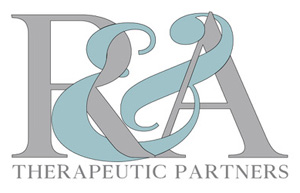Treating Seasonal Affective Disorder Amid COVID-19
As the days grow shorter, we change our clocks to adjust to the winter hours. What many of us cannot change, though, is our reaction to less sunlight and more darkness throughout the winter months. While many people experience the winter blues, some people have more serious symptoms of a condition called seasonal affective disorder. This year, the pandemic has complicated the situation even more and treating seasonal affective disorder amid COVID-19 has become much more critical to the health and well-being of those suffering from it.
Seasonal Affective Disorder (SAD)
The symptoms of SAD can be distressing and overwhelming and can interfere with daily functioning. However, it can be treated. About 5 percent of adults in the U.S. experience SAD and it typically lasts about 40 percent of the year. It is more common among women than men.
SAD has been linked to a biochemical imbalance in the brain prompted by shorter daylight hours and less sunlight in winter. As seasons change, people experience a shift in their biological internal clock or circadian rhythm that can cause them to be out of step with their daily schedule.
More Than Just Sadness
Many people go through short periods of time where they feel sad or not like their usual selves. Sometimes, these mood changes begin and end when the seasons change. People may start to feel “down” when the days get shorter in the fall and winter (also called “winter blues”) and begin to feel better in the spring, with longer daylight hours.
In some cases, these mood changes are more serious and can affect how a person feels, thinks, and handles daily activities. If you have noticed significant changes in your mood and behavior whenever the seasons change, you may be suffering from seasonal affective disorder (SAD), a type of depression.
SAD is more common in people with major depressive disorder or bipolar disorder, especially bipolar II disorder, which is associated with recurrent depressive and hypomanic episodes (less severe than the full-blown manic episodes typical of bipolar I disorder). Additionally, people with SAD tend to have other mental disorders, such as attention-deficit/hyperactivity disorder, an eating disorder, an anxiety disorder, or panic disorder.
SAD Symptoms
SAD is not considered a separate disorder but is a type of depression characterized by its recurrent seasonal pattern, with symptoms lasting about 4 to 5 months per year. Therefore, the signs and symptoms of SAD include those associated with major depression, and some specific symptoms that differ for winter-pattern and summer-pattern SAD.
Symptoms of major depression associated with SAD may include:
- Feeling depressed most of the day, nearly every day
- Losing interest in activities you once enjoyed
- Experiencing changes in appetite or weight
- Having problems with sleep
- Feeling sluggish or agitated
- Having low energy
- Feeling hopeless or worthless
- Having difficulty concentrating
- Having frequent thoughts of death or suicide.
Complicated by COVID-19
Treating seasonal affective disorder amid COVID-19 is more critical and more complicated. Many people are feeling isolated as they stay at home or curtail their activities with other people during the pandemic. For people with SAD, the isolation combines with the shorter amounts of daylight to make their symptoms even worse.
Treatments are available that can help many people with SAD. They fall into four main categories that may be used alone or in combination:
- Light therapy
- Psychotherapy
- Antidepressant medications
- Vitamin D.
Telehealth can be a good option for treatment during COVID-19, to keep everyone safe and healthy. In addition, there are some activities that the individual can try as ways to increase the amount of light in their daily lives and to decrease their feelings of isolation.
Spend more time outdoors. Go for a walk or run, sit on the porch, or find a bench in the park to soak up sunlight and fresh air. Maintain appropriate distances from others while out in public. If the weather does not cooperate, pull up a chair next to a window that brings in lots of light and read a good book.
Stick to a routine. Sleep, wake, and eat on a regular schedule. Include exercise in that schedule, preferably outside in the sunlight or inside next to a window that lets in plenty of light.
Practice mindfulness or meditation. Mindfulness is being fully present, aware of where we are and what we’re doing, and not overly reactive or overwhelmed by what’s going on around us. Mindfulness can be beneficial in regulating the emotions associated with SAD.
Connect with others virtually. Feeling isolated during COVID-19 can make the symptoms of SAD worse. Talk with friends and family safely over video chats or even simple phone calls to stay in touch and to continue to feel connected.
Reach Out for Help Treating Seasonal Affective Disorder Amid COVID-19
At R&A Therapeutic Partners, we are well-equipped and experienced with online therapy and consultations. We encourage you to reach out to us for the therapy services you need for your continued mental health, in the form of virtual telehealth sessions. We support you and your mental health and coping needs, helping you find the path that works best for you. Please contact the Miami therapeutic consultants Raymond Estefania and Ana Moreno to learn more about the services R&A Therapeutic Partners offers. Call us at 786-452-7352 to schedule your appointment.
At R&A Therapeutic Partners Raymond Estefania and Ana Moreno specialize in substance use and mental health disorder evaluations, treatment, intervention and therapeutic/educational consulting for clients throughout the greater South Florida area, as well as nationally and internationally. For more resources and information please visit Therapeutic-Partners.com or on Facebook.

